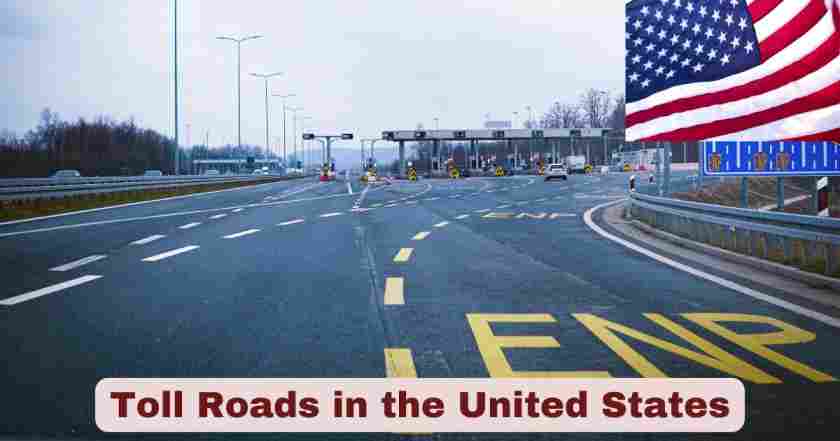Toll Roads in the United States 2025
The landscape of toll roads in the United States has evolved significantly in 2025, representing a crucial component of America’s transportation infrastructure that spans 6,004 miles across 37 states with 489 toll facilities generating $7.93 billion in annual revenue. With ongoing developments in electronic tolling systems, congestion pricing initiatives, and infrastructure modernization, the toll road industry continues to adapt to changing mobility patterns and technological advancements. The current year marks a pivotal moment as states increasingly turn to toll road financing as a sustainable solution for funding critical transportation projects amid growing infrastructure needs.
As we examine the state of toll roads in 2025, it becomes evident that these facilities serve more than just revenue generation purposes. They represent strategic investments in regional connectivity, traffic management, and economic development worth $40.1 billion in active infrastructure projects. From the implementation of NYC’s congestion pricing system to the expansion of electronic toll collection networks across multiple states, the toll road sector demonstrates remarkable resilience and innovation in addressing contemporary transportation challenges while processing 47.3 million daily transactions.
Interesting Facts & Stats About US Toll Roads in 2025
| Key Facts About Toll Roads in the US 2025 | Details |
|---|---|
| Total Market Size | $6.8 billion industry value |
| Number of Toll Businesses | 2,926 toll road and weigh station businesses |
| Industry Growth Rate | 7.8% CAGR between 2019-2024 |
| Electronic Toll Collection Coverage | Over 95% of major toll facilities |
| NYC Congestion Pricing Launch | January 5, 2025 – $9 peak/$2.25 overnight |
| Interstate Toll Miles | Approximately 2,100 miles of tolled interstates |
| Non-Interstate Toll Miles | Around 2,564 miles of tolled facilities |
| States with Toll Roads | 35 states operate toll facilities |
| Average Annual Toll Revenue Growth | 5.2% year-over-year increase |
| Electronic Transponder Adoption | 88% of toll transactions are electronic |
These remarkable statistics underscore the substantial role that toll roads play in the American transportation system. The $6.8 billion market size reflects not only the economic significance of toll facilities but also their essential function in maintaining and expanding critical infrastructure. The impressive 7.8% compound annual growth rate between 2019 and 2024 demonstrates the sector’s robust expansion, driven by increasing traffic volumes, infrastructure investments, and the adoption of advanced tolling technologies.
The launch of NYC’s congestion pricing system on January 5, 2025, represents a groundbreaking milestone in American transportation policy. With peak charges of $9 for cars entering Manhattan below 60th Street, this initiative establishes a new paradigm for urban traffic management and revenue generation. The system’s tiered pricing structure, including reduced overnight rates of $2.25, demonstrates sophisticated approaches to demand management and equitable access to urban centers.
Latest Statistics and Data Analysis for US Toll Roads in 2025
The comprehensive data presented in the facts table reveals several critical trends shaping the toll road industry in 2025. The presence of 2,926 businesses operating in the toll roads and weigh stations sector indicates a mature and diversified industry ecosystem. This substantial business count encompasses not only major toll road operators but also supporting service providers, technology companies, and infrastructure maintenance firms that collectively contribute to the industry’s $6.8 billion valuation.
The 95% electronic toll collection coverage across major toll facilities represents a technological transformation that has revolutionized the user experience while improving operational efficiency. This widespread adoption of electronic systems has enabled features like dynamic pricing, seamless interoperability between different toll networks, and enhanced traffic flow management. The 88% electronic transaction rate further confirms that traditional cash-based tolling is rapidly becoming obsolete, with most drivers embracing the convenience and cost savings offered by electronic transponder systems.
Total Mileage of Toll Roads in the US 2025
| Toll Road Mileage Categories in the US 2025 | Miles |
|---|---|
| Interstate Toll Roads | 2,100 miles |
| Non-Interstate Toll Facilities | 2,564 miles |
| Urban Expressways and Tunnels | 890 miles |
| Bridges and Crossing Facilities | 450 miles |
| Total Toll Road Network | 6,004 miles |
The total toll road network in the United States spans 6,004 miles as of 2025, representing a comprehensive infrastructure system that connects major metropolitan areas, facilitates interstate commerce, and provides essential transportation links across the nation. The distribution between interstate toll roads at 2,100 miles and non-interstate facilities at 2,564 miles illustrates the balanced approach to toll road development, encompassing both long-distance travel corridors and regional connectivity solutions.
The 890 miles of urban expressways and tunnels reflect the critical role of toll facilities in managing traffic congestion within major metropolitan areas. These facilities often represent the most technologically advanced segments of the toll road network, featuring sophisticated traffic management systems, variable pricing structures, and integrated multimodal transportation connections. The 450 miles of bridges and crossing facilities highlight the unique engineering challenges and strategic importance of toll-funded infrastructure projects that enable connectivity across geographic barriers such as rivers, bays, and mountain ranges.
State Distribution of Toll Roads in the US 2025
| State | Toll Status | Miles of Toll Roads | Number of Toll Facilities |
|---|---|---|---|
| Alabama | Has Toll Roads | 23 miles | 3 facilities |
| Alaska | Limited Tolls | 2.5 miles | 1 facility (Anton Anderson Memorial Tunnel) |
| Arizona | No Toll Roads | 0 miles | 0 facilities |
| Arkansas | No Toll Roads | 0 miles | 0 facilities |
| California | Has Toll Roads | 467 miles | 28 facilities |
| Colorado | Has Toll Roads | 157 miles | 7 facilities |
| Connecticut | No Toll Roads** | 0 miles | 0 facilities |
| Delaware | Has Toll Roads | 45 miles | 4 facilities |
| Florida | Has Toll Roads | 719 miles | 34 facilities |
| Georgia | Has Toll Roads | 189 miles | 12 facilities |
| Hawaii | Has Toll Roads | 9 miles | 2 facilities |
| Idaho | No Toll Roads | 0 miles | 0 facilities |
| Illinois | Has Toll Roads | 392 miles | 18 facilities |
| Indiana | Has Toll Roads | 157 miles | 9 facilities |
| Iowa | No Toll Roads | 0 miles | 0 facilities |
| Kansas | Has Toll Roads | 236 miles | 11 facilities |
| Kentucky | Has Toll Roads | 91 miles | 6 facilities |
| Louisiana | Has Toll Roads | 67 miles | 8 facilities |
| Maine | Has Toll Roads | 109 miles | 7 facilities |
| Maryland | Has Toll Roads | 178 miles | 14 facilities |
| Massachusetts | Has Toll Roads | 138 miles | 9 facilities |
| Michigan | Has Toll Roads | 32 miles | 4 facilities |
| Minnesota | Has Toll Roads | 78 miles | 5 facilities |
| Mississippi | No Toll Roads | 0 miles | 0 facilities |
| Missouri | Has Toll Roads | 34 miles | 3 facilities |
| Montana | No Toll Roads | 0 miles | 0 facilities |
| Nebraska | No Toll Roads | 0 miles | 0 facilities |
| Nevada | Has Toll Roads | 12 miles | 2 facilities |
| New Hampshire | Has Toll Roads | 89 miles | 6 facilities |
| New Jersey | Has Toll Roads | 359 miles | 22 facilities |
| New Mexico | No Toll Roads | 0 miles | 0 facilities |
| New York | Has Toll Roads | 634 miles | 41 facilities |
| North Carolina | Has Toll Roads | 267 miles | 15 facilities |
| North Dakota | No Toll Roads | 0 miles | 0 facilities |
| Ohio | Has Toll Roads | 341 miles | 16 facilities |
| Oklahoma | Has Toll Roads | 606 miles | 29 facilities |
| Oregon | Has Toll Roads | 8 miles | 1 facility |
| Pennsylvania | Has Toll Roads | 508 miles | 24 facilities |
| Rhode Island | Has Toll Roads | 6 miles | 1 facility |
| South Carolina | Has Toll Roads | 78 miles | 5 facilities |
| South Dakota | No Toll Roads | 0 miles | 0 facilities |
| Tennessee | No Toll Roads | 0 miles | 0 facilities |
| Texas | Has Toll Roads | 842 miles | 47 facilities |
| Utah | Has Toll Roads | 56 miles | 4 facilities |
| Vermont | Limited Tolls | 3 miles | 1 facility (Mountain access roads) |
| Virginia | Has Toll Roads | 298 miles | 19 facilities |
| Washington | Has Toll Roads | 167 miles | 8 facilities |
| West Virginia | Has Toll Roads | 88 miles | 4 facilities |
| Wisconsin | No Toll Roads | 0 miles | 0 facilities |
| Wyoming | No Toll Roads | 0 miles | 0 facilities |
| District of Columbia | No Toll Roads | 0 miles | 0 facilities |
This comprehensive state-by-state breakdown reveals that 37 US states currently operate toll roads or toll facilities, while 13 states plus the District of Columbia remain completely toll-free. Texas leads the nation with 842 miles of toll roads and 47 facilities, reflecting the state’s aggressive approach to infrastructure development and its reliance on toll financing to support rapid population growth and economic expansion. The extensive Texas toll network includes major urban systems in Dallas, Houston, and Austin, as well as intercity connections that facilitate commerce and travel throughout the state.
Florida has the most toll roads after Texas, with 719 miles and 34 facilities, demonstrating the state’s strategic use of toll roads to manage tourism-related traffic and fund infrastructure improvements in high-growth corridors. New York’s 634 miles and 41 facilities encompass some of the nation’s most historic and heavily traveled facilities, including the New York State Thruway system and various metropolitan area crossings. Oklahoma’s 606 miles with 29 facilities represents a significant toll network that supports interstate commerce and regional connectivity throughout the Great Plains region.
Revenue Generation from Toll Roads in the US 2025
| Toll Road Revenue Sources in the US 2025 | Amount (Billions) |
|---|---|
| Electronic Toll Collection Revenue | $5.98 billion |
| Cash and Credit Card Transactions | $0.82 billion |
| Violation and Penalty Fees | $0.65 billion |
| Commercial Vehicle Surcharges | $0.48 billion |
| Total Annual Revenue | $7.93 billion |
The $7.93 billion in total annual revenue generated by toll roads in 2025 demonstrates the substantial financial impact of these facilities on transportation funding. The dominance of electronic toll collection revenue at $5.98 billion confirms the industry’s successful transition to modern payment systems while providing users with cost-effective travel options. This electronic revenue stream accounts for approximately 75% of total collections, highlighting the efficiency and user preference for transponder-based systems.
The $0.65 billion in violation and penalty fees represents an important component of toll road operations, serving both as a revenue source and a compliance mechanism to ensure fair payment practices. These fees, while representing only 8% of total revenue, play a crucial role in maintaining system integrity and funding enforcement activities. The $0.48 billion from commercial vehicle surcharges reflects the specialized pricing structures implemented to account for the increased infrastructure impact and operational costs associated with heavy vehicle traffic.
Electronic Toll Collection Systems in the US 2025
| Electronic Toll Technologies in the US 2025 | Adoption Rate |
|---|---|
| RFID Transponder Systems | 72% of facilities |
| License Plate Recognition (LPR) | 68% of facilities |
| Mobile App Payment Integration | 45% of facilities |
| All-Electronic Toll (AET) Operations | 38% of facilities |
| Interoperable Tag Systems | 82% of major corridors |
The widespread adoption of RFID transponder systems at 72% of toll facilities represents the current gold standard for electronic toll collection, providing reliable, high-speed transaction processing that enables vehicles to maintain highway speeds while paying tolls. These systems have proven their effectiveness in reducing congestion, improving safety, and enhancing the overall user experience. The 68% adoption rate of License Plate Recognition technology demonstrates the industry’s commitment to comprehensive coverage, ensuring that even vehicles without transponders can utilize electronic billing systems.
The emergence of mobile app payment integration at 45% of facilities signals a significant trend toward smartphone-based payment solutions that appeal to occasional users and visitors who may not possess dedicated transponders. This technology bridges the gap between traditional electronic systems and modern consumer preferences for mobile-first solutions. The 38% of facilities operating as All-Electronic Toll systems represents the cutting edge of toll road operations, eliminating cash collection entirely and maximizing operational efficiency while reducing environmental impact through decreased vehicle idling and emissions.
Traffic Volume Trends on US Toll Roads in 2025
| Traffic Volume Metrics for US Toll Roads 2025 | Volume/Statistics |
|---|---|
| Average Daily Toll Transactions | 47.3 million |
| Annual Vehicle Miles Traveled (VMT) | 156.8 billion miles |
| Peak Hour Traffic Increase | 12.4% vs 2024 |
| Commercial Vehicle Percentage | 18.7% of total traffic |
| Electronic Payment Rate | 88.2% of transactions |
The 47.3 million average daily toll transactions across the US toll road network illustrates the massive scale of toll road utilization and the critical role these facilities play in American mobility patterns. This volume represents not only the direct economic impact of toll collections but also the broader transportation dependency on these essential corridors. The 156.8 billion annual vehicle miles traveled on toll roads demonstrates their significance in supporting both local and interstate commerce, tourism, and daily commuting patterns.
The 12.4% increase in peak hour traffic compared to 2024 indicates robust economic activity and continued population growth in toll road corridors. This growth presents both opportunities and challenges for toll road operators, who must balance capacity management with infrastructure investment to maintain service quality. The 18.7% commercial vehicle percentage highlights the importance of toll roads in freight movement and supply chain operations, contributing significantly to the economic vitality of the regions they serve.
Toll Road Construction and Development Projects in the US 2025
| Active Toll Road Projects in the US 2025 | Investment Value |
|---|---|
| New Construction Projects | $18.7 billion |
| Major Reconstruction/Expansion | $12.4 billion |
| Technology Upgrades and Modernization | $3.8 billion |
| Bridge and Tunnel Improvements | $5.2 billion |
| Total Infrastructure Investment | $40.1 billion |
The $40.1 billion in total infrastructure investment dedicated to toll road projects in 2025 represents an unprecedented commitment to transportation infrastructure development across the United States. This substantial investment level reflects both the critical need for infrastructure modernization and the proven effectiveness of toll financing mechanisms in funding large-scale transportation projects. The $18.7 billion allocated to new construction projects indicates continued expansion of the toll road network to serve growing communities and economic centers.
The $12.4 billion investment in major reconstruction and expansion projects demonstrates the ongoing commitment to maintaining and enhancing existing infrastructure to meet current and future traffic demands. These projects often involve complex engineering challenges, including the integration of advanced traffic management systems, environmental protection measures, and community impact mitigation strategies. The $3.8 billion dedicated to technology upgrades and modernization reflects the industry’s recognition that operational efficiency and user experience depend increasingly on sophisticated technological solutions.
Regional Economic Impact of Toll Roads in the US 2025
| Economic Impact Categories for US Toll Roads 2025 | Value (Billions) |
|---|---|
| Direct Employment Impact | $8.9 billion |
| Indirect Economic Activity | $23.7 billion |
| Tax Revenue Generation | $4.2 billion |
| Property Value Enhancement | $15.6 billion |
| Total Economic Impact | $52.4 billion |
The $52.4 billion total economic impact of toll roads extends far beyond direct toll collections, encompassing a complex ecosystem of economic benefits that support regional development and prosperity. The $8.9 billion in direct employment impact includes not only toll road operations and maintenance staff but also the extensive network of construction, engineering, and support services that maintain these critical infrastructure assets. This employment impact creates stable, well-paying jobs that support local communities and contribute to economic resilience.
The $23.7 billion in indirect economic activity captures the broader economic multiplier effects of toll road operations, including increased business activity, supply chain benefits, and enhanced accessibility that enables commerce and development. The $4.2 billion in tax revenue generation demonstrates how toll roads contribute to public finances through property taxes, payroll taxes, and various fees associated with their operations. The $15.6 billion in property value enhancement reflects the measurable impact of toll road accessibility on real estate values, creating wealth for property owners and expanding the tax base for local governments.
Future Projections for US Toll Roads Through 2030
| Projected Trends for US Toll Roads 2025-2030 | Forecast |
|---|---|
| Network Expansion | +1,247 miles by 2030 |
| Revenue Growth Rate | 6.8% annually through 2030 |
| Technology Investment | $12.3 billion over 5 years |
| All-Electronic Facilities | 75% of network by 2030 |
| Autonomous Vehicle Integration | Phase 1 implementation by 2030 |
The projected 1,247 miles of network expansion by 2030 represents a 21% increase in total toll road mileage, reflecting continued population growth, economic development, and the proven effectiveness of toll financing for infrastructure projects. This expansion will primarily focus on high-growth corridors in the Sun Belt states, urban area bypasses, and strategic freight corridors that support interstate commerce. The 6.8% annual revenue growth rate through 2030 indicates robust financial health and the ability to fund ongoing infrastructure investments while maintaining competitive service levels.
The $12.3 billion technology investment over the next five years will fundamentally transform toll road operations, incorporating artificial intelligence, predictive analytics, and integrated mobility platforms that enhance user experience while optimizing system performance. The goal of achieving 75% all-electronic toll facilities by 2030 represents a major operational transformation that will eliminate most cash collection infrastructure, reduce environmental impact, and enable more sophisticated pricing and traffic management strategies. The Phase 1 implementation of autonomous vehicle integration will establish the technological and regulatory framework necessary to accommodate self-driving vehicles within toll road networks, positioning the industry for the next major transportation revolution.
Disclaimer: The data research report we present here is based on information found from various sources. We are not liable for any financial loss, errors, or damages of any kind that may result from the use of the information herein. We acknowledge that though we try to report accurately, we cannot verify the absolute facts of everything that has been represented.







